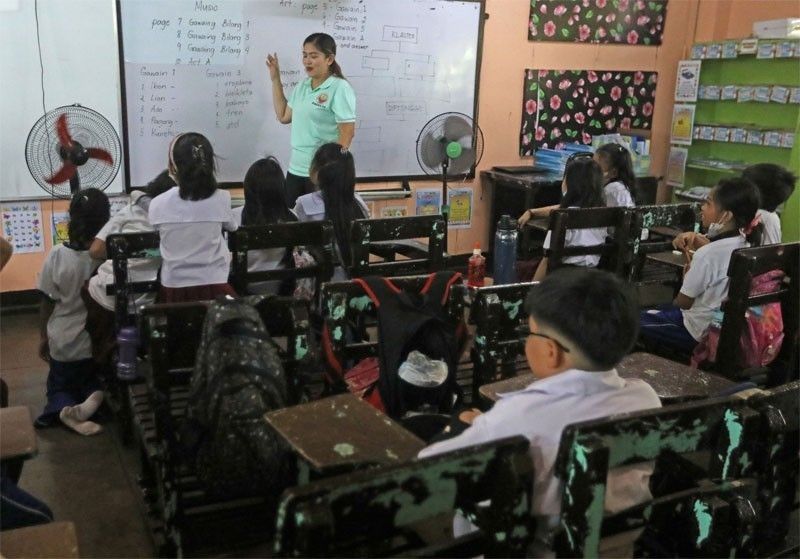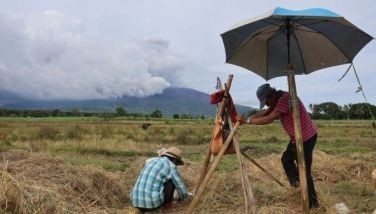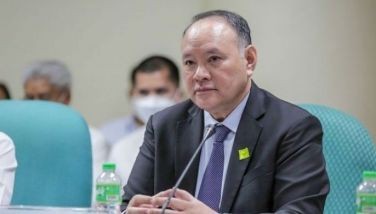Why the loss of a history subject in high school causes ripple effect in college

MANILA, Philippines — The absence of a dedicated Philippine History subject in high school not only weakened students' grasp of historical events but also hampered college educators’ efforts to engage students in critical discussions of history that go beyond memorization of facts.
In a recently published study titled “Disjunctures in Philippine History Education Since the K to 12 Reform,” scholar Lee Candelaria said that the six-year knowledge gap that resulted from moving the teaching of Philippine History to grade school “becomes more pronounced when seen from the vantage point of higher education.”
Since the shift to the K to 12 curriculum in 2013, a standalone course on Philippine History has been removed from secondary education and is now only taught at the elementary level (Grades 5 and 6) and college (Readings in Philippine History).
Through interviews with higher education instructors and a review of available materials, the study sought to capture the impact of K to 12 on the teaching of Philippine history and whether the new curriculum had strengthened or weakened Filipino students’ historical foundations.
Unable to reap full gains
Among other findings, the study showed that changes in the curriculum for basic education, especially the introduction of senior high school, led to a more focused and competency-based manner of teaching Philippine History at the college level.
Before, college educators assigned to teach Philippine History were had to cover the entire breadth of the country's history in just a single semester or an average of 16 weeks.
But since the addition of two more years of high school, to avoid redundant lessons, the study of Philippine History in college became more focused on the reading and analysis of primary sources and firsthand accounts of historical events.
“Using (Readings in Philippine History) as an example, the ‘critical competencies ranging from detecting bias, appreciating the effect of perspective on the construction and understanding of history, and interpreting facts’ are emphasized together with ‘factual knowledge,’” Candelaria wrote in his study published by the Germany-based Rosa-Luxemburg-Stiftung.
“Within this context, RPH was, indeed, an upgrade,” Candelaria said.
But college educators who spoke to Candelaria noted that there are topics that remain difficult to teach because of students' lack of "stock knowledge" or baseline grasp of historical events — which they expect to have been covered at the basic education level.
The study said that one educator from Manila recounted her experience of teaching students who struggled to engage in discussions beyond basic historical facts. According to the study, the teacher said: “Since the students are now in college, we deal with historical questions focused on why and how… so I would assume that the who, what, when, and where have been covered in the basic education level, but this is not the case.”
Quoting a column by historian Ambeth Ocampo, the study also noted that the history expert appeared to have misgivings about the college history course even as its content strives to move students beyond rote memorization of historical names and dates.
Ocampo said that while the college subject can "inspire critical and constructive conversation about Philippine history, a prerequisite to this is a knowledge of Philippine History built through the basic education level."
“He said that because Philippine History was removed in high school and “melded it … into that mishmash we know as Araling Panlipunan, students must relearn history double-time,” Candelaria wrote.
Vulnerable to disinformation
Candelaria noted that the adjusted history curriculum in college makes it possible for educators to impress upon students that studying history concerns not just memorizing facts but also the analysis and deconstruction of pivotal historical events.
But the six-year gap between elementary and college-level history classes leaves room for historical distortion and misinformation to "take root in students' minds," the scholar said.
“This reality is dangerous since students today are digital natives, regularly and greatly exposed to new media, social media platforms, and technologies where sensational and incredible historical inaccuracies are trumpeted and tend to proliferate,” Candelaria said.
“Again, such is already the challenge of teaching history to students, even before disinformation in social media, but the six-year gap could only worsen matters,” he added.
While history teachers have lauded DepEd for integrating a stronger Southeast Asian perspective in the revised Araling Panlipunan curriculum for Kinder to Grade 10, Candelaria said it remains to be seen whether the new curriculum will lead to better integration of Philippine history topics across educational levels.
Former Department of Education Secretary Leonor Briones previously defended the absence of a dedicated Philippine History subject in high school, saying that discussions of events in Philippine history were “integrated” across several subjects.
But a group of Araling Panlipunan educators and history advocates said that as early as 2015 — or one year after the change — students were already showing signs of having a deficient knowledge of history.
Blaming the lack of follow-up history lessons after grade school, the group said as an example that “many high school and even college students” were constantly asking why an actor who portrayed Apolinario Mabini in the historical film “Heneral Luna” was “constantly sitting.”
“Unfortunately, these students are unaware that Mabini was crippled,” the petitioner said.
Overall, Candelaria’s study noted that quality instruction of history in basic and higher education is necessary at a time when "disinformation and fabricated have grown exponentially."
“Indeed, history lessons are ideal places to teach students about evaluating the information presented since primary source analysis is part and parcel of historical education,” Candelaria said.
- Latest
- Trending































